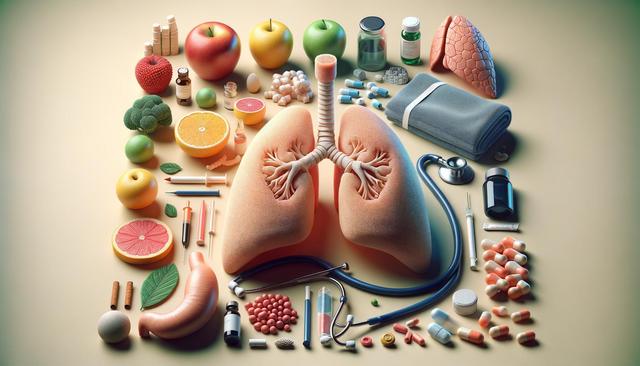Types of Lung Cancer and Their Impact on Treatment
The type of lung cancer a patient has plays a critical role in determining the most effective treatment approach. The two main forms are non-small cell lung cancer (NSCLC) and small cell lung cancer (SCLC). NSCLC is more common and generally grows and spreads more slowly, which can influence the range of treatment options available. SCLC, on the other hand, tends to be more aggressive and often requires more intensive treatment. Understanding the specific type helps doctors recommend therapies that are tailored to the cancer’s characteristics and progression.
In addition to the cancer type, other factors such as the stage of the disease, the patient’s overall health, and genetic mutations within the tumor are also considered. These variables affect whether treatment will focus on curing the disease, controlling its growth, or relieving symptoms.
Main Treatment Approaches for Lung Cancer
Lung cancer treatment typically involves a combination of methods, each serving a specific purpose depending on the patient’s condition. The primary treatment options include:
- Surgery – usually performed when the cancer is detected early and is localized.
- Radiation therapy – used to target and destroy cancer cells with high-energy rays.
- Chemotherapy – involves drugs that kill or slow the growth of cancer cells, often used when the disease has spread.
- Targeted therapy – focuses on specific abnormalities in cancer cells that allow them to grow uncontrollably.
- Immunotherapy – helps the body’s immune system recognize and attack cancer cells more effectively.
Each treatment comes with its own considerations regarding side effects, effectiveness, and recovery time. Doctors often use a multidisciplinary approach, combining several treatments to improve outcomes.
Emerging Therapies and Personalized Medicine
Recent advancements in biomedical research have introduced new methods for treating lung cancer more effectively. One of the most promising developments is personalized medicine, which uses genetic profiling to identify the unique mutations in a patient’s cancer. This allows for the selection of therapies that specifically target those mutations, increasing the chances of a positive response.
Emerging therapies include:
- Next-generation targeted therapies that block cancer-promoting pathways more precisely.
- Innovative immunotherapies that enhance the immune system’s ability to detect and destroy cancer cells.
- Combination therapies that integrate multiple types of treatments for a more robust effect.
These therapies are often considered when standard treatments are ineffective or when the cancer returns after initial treatment. Clinical trials also play an essential role in testing new drugs and protocols, offering patients access to cutting-edge care.
Managing Side Effects and Supportive Care
Managing the side effects of lung cancer treatment is crucial for maintaining quality of life. Common side effects include fatigue, nausea, loss of appetite, and difficulty breathing. Treatments like chemotherapy and radiation can also affect blood cell counts and increase the risk of infection. Supportive care focuses on alleviating these symptoms and can include medications, dietary changes, physical therapy, and counseling.
Palliative care is another important aspect of lung cancer treatment. It is designed not only for end-of-life care but also for improving comfort during active treatment. Services may include:
- Pain management strategies
- Respiratory therapy
- Emotional and psychological support
- Nutrition counseling
Support groups and patient advocacy organizations also provide valuable resources and community for those undergoing treatment, helping patients and their families cope with the challenges they face.
Importance of Early Detection and Ongoing Monitoring
Early detection of lung cancer significantly increases the chances of successful treatment. Screening programs using low-dose CT scans can identify cancer at earlier stages, especially in high-risk individuals such as long-term smokers or those with a family history of the disease. When detected early, lung cancer is more likely to be treated effectively with surgery or localized therapies.
Ongoing monitoring after treatment is also essential to detect any recurrence or new developments promptly. Follow-up care typically includes regular imaging tests, blood work, and visits with oncology specialists. Patients are also advised to adopt healthier lifestyles, such as quitting smoking, maintaining a balanced diet, and engaging in regular physical activity, which can support overall recovery and reduce the risk of recurrence.
By staying vigilant with screenings and follow-ups, patients and healthcare providers can work together to manage the disease more effectively over time.
Conclusion: Navigating Lung Cancer Treatment with Informed Choices
Lung cancer treatment is a complex and individualized journey that benefits greatly from informed decision-making and a multidisciplinary care team. Understanding the types of treatments available, staying updated on emerging therapies, and actively managing side effects all play a significant role in improving outcomes and quality of life. With ongoing advancements in medical research and a growing emphasis on personalized care, patients have more options than ever to approach lung cancer with hope and resilience. Remaining proactive in screening, treatment planning, and supportive care can make a meaningful difference at every stage of the disease.


